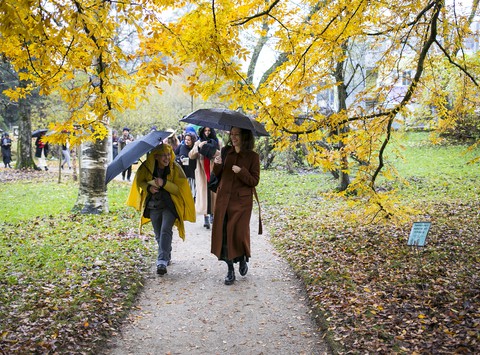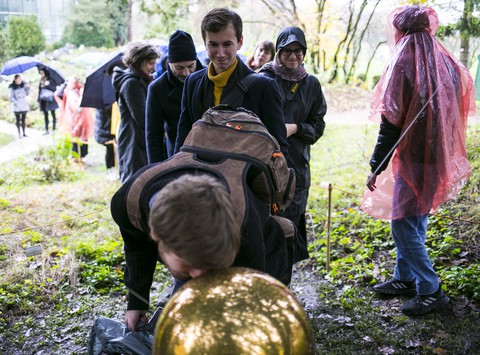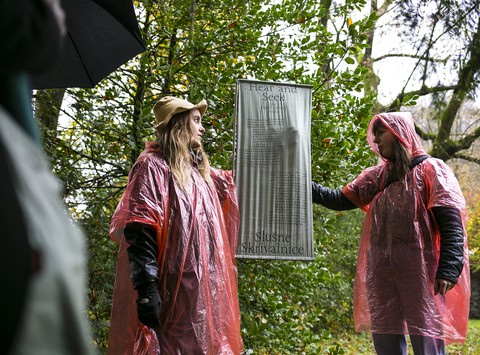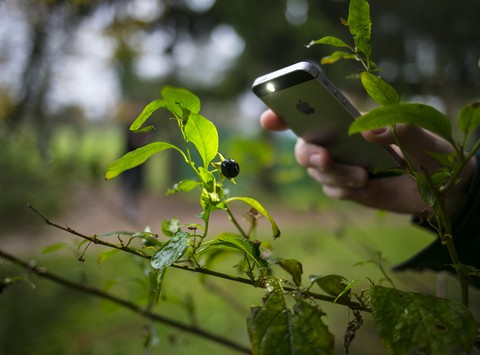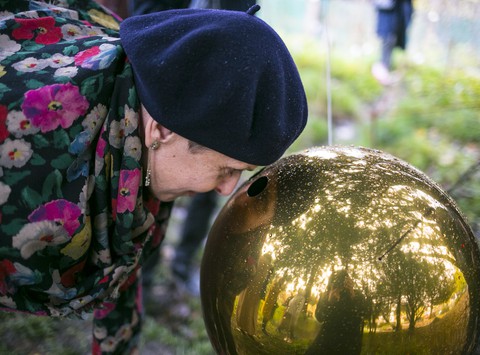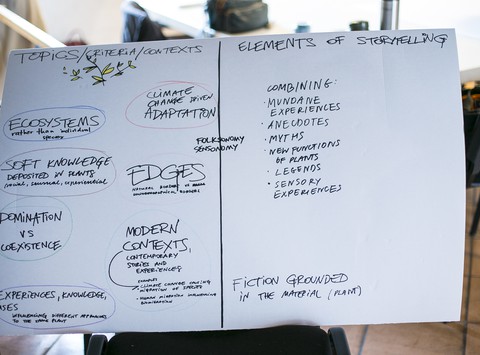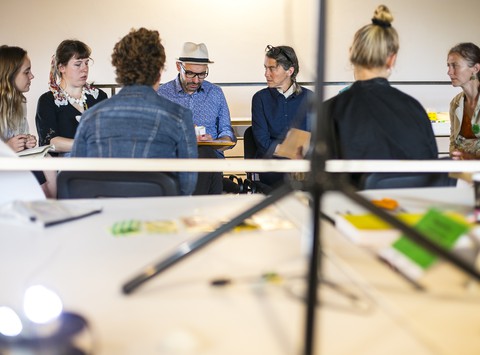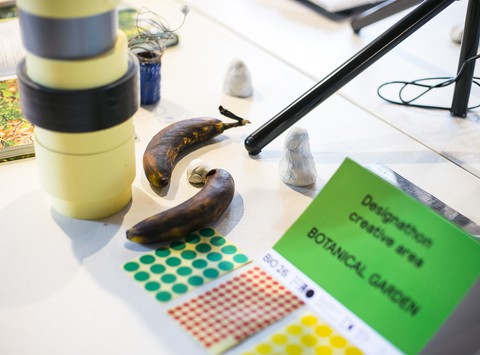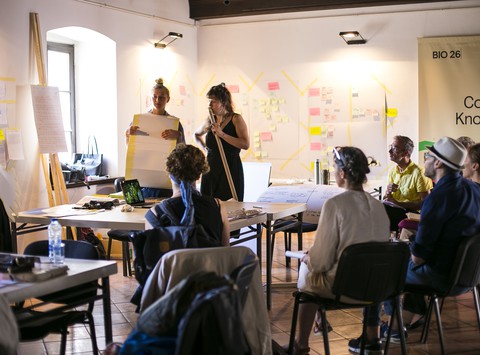Challenge #5: Connecting Plants and People
Botanical gardens are primarily scientific institutions and their main function is to catalogue and preserve a country’s plant life. They are also parks and educational spaces.
In order to make the garden’s “plant library” less of a repository of scientific knowledge and more of a place of learning and awareness, the challenge was to expand the capabilities of the Index seminum—a seed catalogue that serves as a kind of Wikipedia of plants. The aim was to open public access to this information, make it visible and interesting, and give the Index seminum the function of both a teaching accessory and a facilitator of plant conservation.
Mur-Mur-Murs from the Hi-Hi-Hills: How to Understand Reflected Echoes from the Forest
Mur-Mur-Murs from the Hi-Hi-Hills embraces storytelling as an essential component of learning. By introducing interactive objects, sounds and words in the Botanical Garden, the project proposes sensorial and emotional engagement with the plants in an otherwise scientific, data-driven environment.
The soft data gathering process included a field trip to Padovo pri Osilnici—a village in southern Slovenia—performances, and encounters and exchanges with the local community, an invaluable source of ethnobotanical knowledge.
By bringing together elements of playfulness, imagination and humour, the constellation of objects presented—and the words they carry—elicit different experiences as ways of understanding the space of the garden as an assemblage of stories, materials, flows, anecdotes, relationships, smells, sounds, memories, and futures.
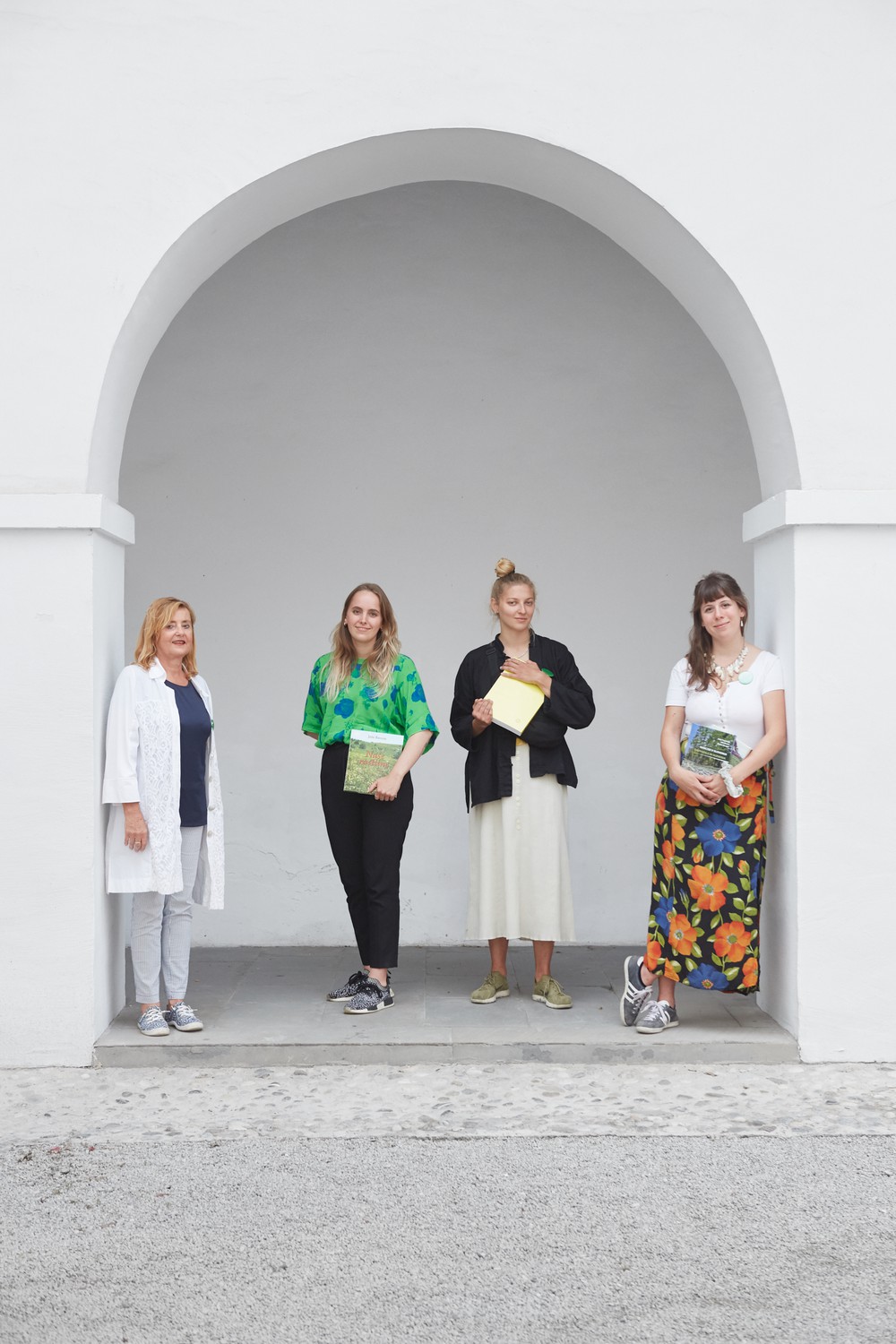
Krzak Collective:
A collective fostered by shared efforts and idea flows amidst the uncertainty of the future, triggered by current climate and ecological crises. For the past years running a non-profit community garden and cultural space in Warsaw, PL, it focuses on strategies for translating environmental care into arts and culture as well as into everyday practices. Occupying physical space of a garden and small house at Osiedle Jazdów, a green enclave in the city center, it offers a place for participation, commoning and exchange through activities around it. We have organized exhibitions, workshops, discussions, concerts, fundraisers, protests and self-published a magazine under the name KRZAK PAPIER, all in collaboration with other initiatives, artists and activists in order to create engagement with the climate movement and develop new collective sensibilities.
Participating members:
Eliza Chojnacka (Poland) is a social designer focused on urban dynamics. Often uses mapping as a tool to explore urban space and to visualize the sensual experience of our surroundings.
Kamila Kantek (Poland) studied process design at the School of Form in Poznań, and she is currently a graduate student at the Commoners’ Society at the Sandberg Institute in Amsterdam. She is a multidisciplinary designer, working on a project implementing AR and VR merged with environment observations.
http://kamilakantek.com
Olga Roszkowska (Poland) is a photographer and video-maker. She is currently completing her MA studies in photography and society at the Royal Academy of Arts in The Hague. Rozskowska is also part of Krzak Collective, which focuses on translating environmental care into arts and culture as well as into everyday practices.
http://www.krzakpapier.pl/
Pola Salicka (Poland) is an artist and designer, currently finishing her MA in industrial design at Lund University. She helps coordinate the communal garden in Lund. In 2017 she took part in BIO 25 – Faraway, So Close. She is also part of Krzak Collective.
http://www.krzakpapier.pl/
Gabriela Szalanska (Poland) is an industrial designer. Her main interests include conceptual and critical design.
Project manager:
Simona Volaj Rakušček (Slovenia) is a lawyer with extensive experience in banking and as a legal adviser for the Arbitration Court for Sport at the Olympic Committee of Slovenia. She is also an honorary consul general of the Kingdom of Thailand in Slovenia and a member of the executive committee of the Slovene Consular Corps.

Futurefarmers is a group of artists, activists, farmers, and architects with a common interest in creating frameworks of participation that recalibrate people’s cultural compass. Amy Franceschini, an artist and designer, has exhibited at the Guggenheim Museum in New York, the Whitney Biennial in New York, MoMA, the San Francisco Museum of Modern Art, the Canadian Center for Architecture, and the 2014 Venice Architectural Biennale. Lode Vranken is an architect and philosopher. He has been teaching since 2005 as a Ned delegate at the Institute for Advanced Architecture of Catalonia in Barcelona, Spain.
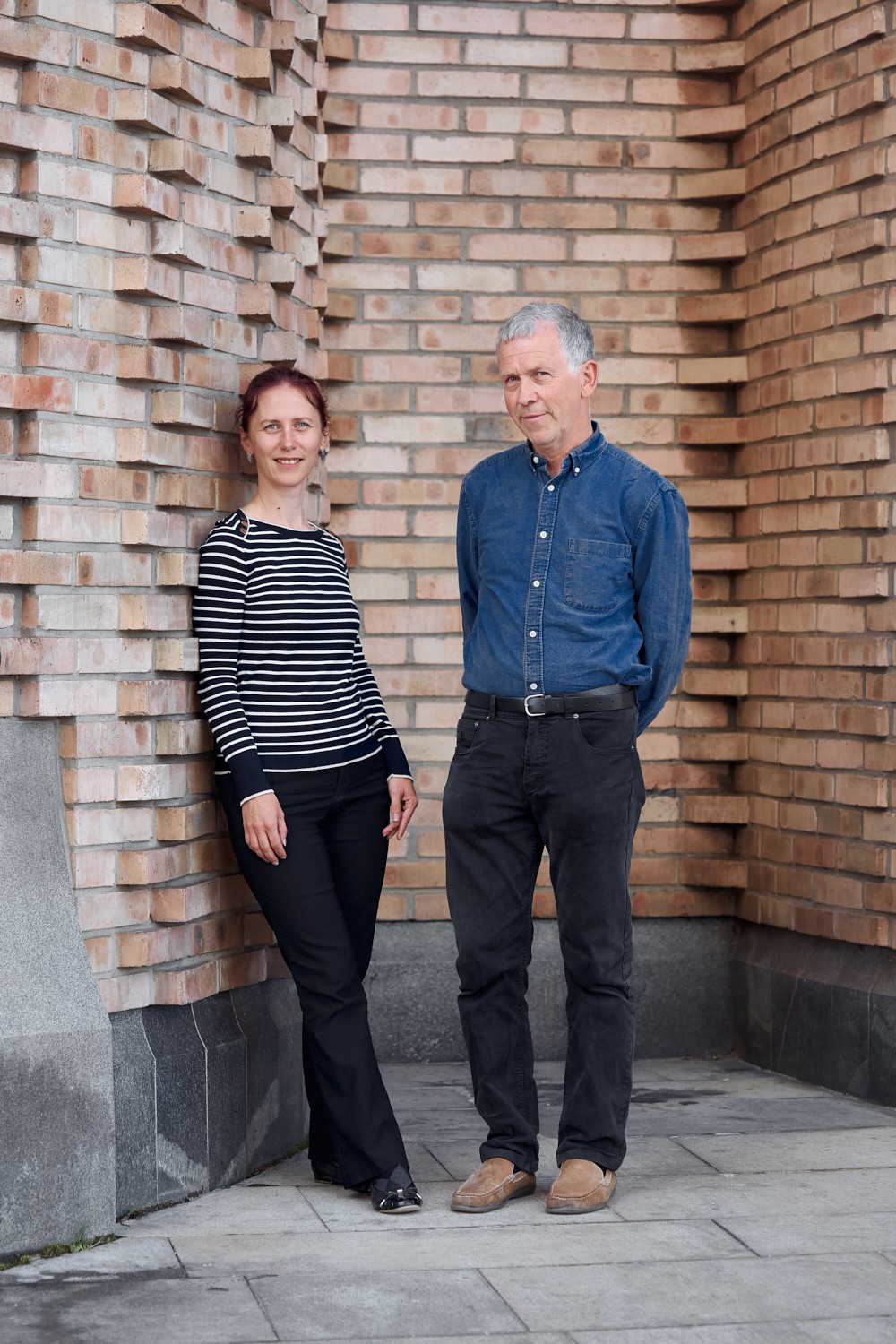
Jože Bavcon has been the director of the Ljubljana Botanical Garden since 1995. He studies Slovenian native flora, had authored many books and articles, and has worked on various projects, including ones on breeding certain endangered Slovenian plant species and endemic plants in substitute habitats. He is responsible for establishing the gene seed bank at the Botanical Garden. In 2015 he received the Marsh Award for international plant conservation.
Blanka Ravnjak has been a researcher at the Ljubljana Botanical Garden and an assistant for botany since 2009. She organized the European Botanic Gardens Consortium Meeting in 2010 and 2016, and she was in charge of collaboration with the Kew millennium seed bank project in 2013. She has authored several papers about plants in various journals and has coauthored books on native flora. Currently she is part of the project Life Naturaviva, which focuses on protecting biodiversity.
The Ljubljana Botanical Garden is the oldest Slovenian cultural, research, and educational institution. It was founded in 1810, at the time of the Illyrian Provinces, as a “garden of native flora” and as a department of the Central School (École Centrale). It was designed by its first director, Franz Hladnik. Since 1920, the garden has been part of the University of Ljubljana. It has enjoyed protection as a monument of landscape gardening since 1991. The principal activities of the Botanical Garden are research, teaching, and disseminating information on horticulture. An important task is the cultivation and study of species endemic to Slovenia. The garden cultivates plants that are endangered in the wild or even extinct in Slovenia, and it also serves as a test area for experimentation on plants that need to be cultivated for a longer period of time. Every year the seeds of the garden plants are collected for its needs and for exchange with other botanical gardens. The garden has a seed bank, which exchanges a seed index with 293 other gardens every year.


